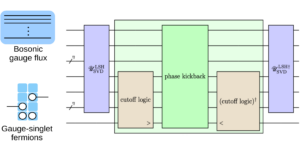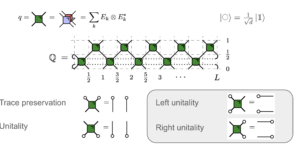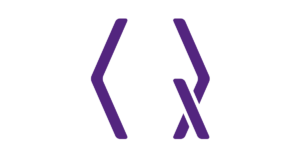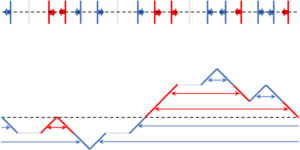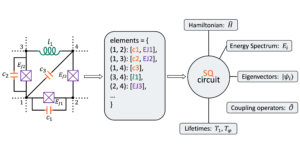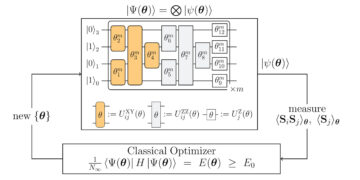1QMATH, Department of Mathematical Sciences, University of Copenhagen, Universitetsparken 5, 2100 Copenhagen, Denmark
2Department of Mathematics, Technische Universität München, 85748 Garching, Germany
3Munich Center for Quantum Science and Technology (MCQST), München, Germany
Find this paper interesting or want to discuss? Scite or leave a comment on SciRate.
Abstract
The data processing inequality is the most basic requirement for any meaningful measure of information. It essentially states that distinguishability measures between states decrease if we apply a quantum channel and is the centerpiece of many results in information theory. Moreover, it justifies the operational interpretation of most entropic quantities. In this work, we revisit the notion of contraction coefficients of quantum channels, which provide sharper and specialized versions of the data processing inequality. A concept closely related to data processing is partial orders on quantum channels. First, we discuss several quantum extensions of the well-known less noisy ordering and relate them to contraction coefficients. We further define approximate versions of the partial orders and show how they can give strengthened and conceptually simple proofs of several results on approximating capacities. Moreover, we investigate the relation to other partial orders in the literature and their properties, particularly with regard to tensorization. We then examine the relation between contraction coefficients with other properties of quantum channels such as hypercontractivity. Next, we extend the framework of contraction coefficients to general f-divergences and prove several structural results. Finally, we consider two important classes of quantum channels, namely Weyl-covariant and bosonic Gaussian channels. For those, we determine new contraction coefficients and relations for various partial orders.
Featured image: Relations between the different partial orders that are discussed in the paper.
[embedded content]
[embedded content]
► BibTeX data
► References
[1] Rudolf Ahlswede and Peter Gács. Spreading of sets in product spaces and hypercontraction of the markov operator. The annals of probability, pages 925–939, 1976. doi:10.1214/aop/1176995937.
https://doi.org/10.1214/aop/1176995937
[2] Koenraad M R Audenaert. A sharp continuity estimate for the von Neumann entropy. Journal of Physics A: Mathematical and Theoretical, 40(28):8127–8136, June 2007. doi:10.1088/1751-8113/40/28/s18.
https://doi.org/10.1088/1751-8113/40/28/s18
[3] Salman Beigi. Sandwiched Rényi divergence satisfies data processing inequality. Journal of Mathematical Physics, 54(12):122202, jun 2013. URL: http://arxiv.org/abs/1306.5920, arXiv:1306.5920, doi:10.1063/1.4838855.
https://doi.org/10.1063/1.4838855
arXiv:1306.5920
[4] Salman Beigi, Nilanjana Datta, and Cambyse Rouzé. Quantum reverse hypercontractivity: Its tensorization and application to strong converses. Communications in Mathematical Physics, 376(2):753–794, 2020. doi:10.1007/s00220-020-03750-z.
https://doi.org/10.1007/s00220-020-03750-z
[5] Salman Beigi and Amin Gohari. On dimension bounds for auxiliary quantum systems. IEEE transactions on information theory, 60(1):368–387, 2013. doi:10.1109/TIT.2013.2286079.
https://doi.org/10.1109/TIT.2013.2286079
[6] P Bergmans. Random coding theorem for broadcast channels with degraded components. IEEE Transactions on Information Theory, 19(2):197–207, 1973. doi:10.1109/TIT.1973.1054980.
https://doi.org/10.1109/TIT.1973.1054980
[7] Mario Berta, David Sutter, and Michael Walter. Quantum Brascamp-Lieb Dualities, 2019. arXiv:1909.02383v2. URL: https://arxiv.org/abs/1909.02383, arXiv:1909.02383, doi:10.48550/ARXIV.1909.02383.
https://doi.org/10.48550/ARXIV.1909.02383
arXiv:1909.02383
[8] Francesco Buscemi. Degradable channels, less noisy channels, and quantum statistical morphisms: An equivalence relation. Problems of Information Transmission, 52(3):201–213, 2016. doi:10.1134/s0032946016030017.
https://doi.org/10.1134/s0032946016030017
[9] Francesco Buscemi. Comparison of noisy channels and reverse data-processing theorems. In 2017 IEEE Information Theory Workshop (ITW), pages 489–493. IEEE, 2017. doi:10.1109/itw.2017.8278038.
https://doi.org/10.1109/itw.2017.8278038
[10] LL Campbel. An extended Cencov characterization of the information metric. In Proc. AMS, volume 98, pages 135–141, 1996.
[11] Yu Cao and Jianfeng Lu. Tensorization of the strong data processing inequality for quantum chi-square divergences. Quantum, 3:199, 2019. doi:10.22331/q-2019-10-28-199.
https://doi.org/10.22331/q-2019-10-28-199
[12] Eric A Carlen and Anna Vershynina. Recovery map stability for the data processing inequality. Journal of Physics A: Mathematical and Theoretical, 53(3):035204, January 2020. doi:10.1088/1751-8121/ab5ab7.
https://doi.org/10.1088/1751-8121/ab5ab7
[13] Nikolai Nikolaevich Cencov. Statistical decision rules and optimal inference. Number 53. American Mathematical Soc., 2000.
[14] Man-Duen Choi, Mary Beth Ruskai, and Eugene Seneta. Equivalence of certain entropy contraction coefficients. Linear algebra and its applications, 208:29–36, 1994. doi:10.1016/0024-3795(94)90428-6.
https://doi.org/10.1016/0024-3795(94)90428-6
[15] Matthias Christandl, Christoph Hirche, and Andreas Winter. in preparation. 2021.
[16] Joel Cohen, Johannes HB Kempermann, and Gheorghe Zbaganu. Comparisons of stochastic matrices with applications in information theory, statistics, economics and population. Springer Science & Business Media, 1998.
[17] Joel E Cohen, Yoh Iwasa, Gh Rautu, Mary Beth Ruskai, Eugene Seneta, and Gh Zbaganu. Relative entropy under mappings by stochastic matrices. Linear algebra and its applications, 179:211–235, 1993. doi:10.1016/0024-3795(93)90331-h.
https://doi.org/10.1016/0024-3795(93)90331-h
[18] Thomas Cover. Broadcast channels. IEEE Transactions on Information Theory, 18(1):2–14, 1972. doi:10.1109/TIT.1972.1054727.
https://doi.org/10.1109/TIT.1972.1054727
[19] Andrew Cross, Ke Li, and Graeme Smith. Uniform additivity in classical and quantum information. Physical review letters, 118(4):040501, 2017. doi:10.1103/physrevlett.118.040501.
https://doi.org/10.1103/physrevlett.118.040501
[20] Imre Csiszár and Janos Korner. Broadcast channels with confidential messages. IEEE transactions on information theory, 24(3):339–348, 1978. doi:10.1109/TIT.1978.1055892.
https://doi.org/10.1109/TIT.1978.1055892
[21] F. d. P. Calmon, Y. Polyanskiy, and Y. Wu. Strong data processing inequalities for input constrained additive noise channels. IEEE Transactions on Information Theory, 64(3):1879–1892, 2018. doi:10.1109/tit.2017.2782359.
https://doi.org/10.1109/tit.2017.2782359
[22] Nilanjana Datta, Christoph Hirche, and Andreas Winter. Convexity and operational interpretation of the quantum information bottleneck function. In 2019 IEEE International Symposium on Information Theory (ISIT), pages 1157–1161. IEEE, 2019. doi:10.1109/isit.2019.8849518.
https://doi.org/10.1109/isit.2019.8849518
[23] E Brian Davies. On the repeated measurement of continuous observables in quantum mechanics. Journal of Functional Analysis, 6(2):318–346, 1970. doi:10.1016/0022-1236(70)90064-9.
https://doi.org/10.1016/0022-1236(70)90064-9
[24] G. De Palma. New lower bounds to the output entropy of multi-mode quantum gaussian channels. IEEE Transactions on Information Theory, 65(9):5959–5968, 2019. doi:10.1109/tit.2019.2914434.
https://doi.org/10.1109/tit.2019.2914434
[25] Giacomo De Palma and Stefan Huber. The conditional entropy power inequality for quantum additive noise channels. Journal of Mathematical Physics, 59(12):122201, 2018. doi:10.1063/1.5027495.
https://doi.org/10.1063/1.5027495
[26] Giacomo De Palma, Milad Marvian, Cambyse Rouzé, and Daniel Stilck França. Limitations of variational quantum algorithms: a quantum optimal transport approach, 2022. arXiv.2204.03455. doi:10.48550/ARXIV.2204.03455.
https://doi.org/10.48550/ARXIV.2204.03455
[27] Giacomo De Palma and Dario Trevisan. The conditional entropy power inequality for bosonic quantum systems. Communications in Mathematical Physics, 360(2):639–662, 2018. doi:10.1007/s00220-017-3082-8.
https://doi.org/10.1007/s00220-017-3082-8
[28] Giacomo De Palma, Dario Trevisan, and Vittorio Giovannetti. Gaussian states minimize the output entropy of the one-mode quantum attenuator. IEEE Transactions on Information Theory, 63(1):728–737, 2016. doi:10.1109/tit.2016.2621748.
https://doi.org/10.1109/tit.2016.2621748
[29] Giacomo De Palma, Dario Trevisan, and Vittorio Giovannetti. Gaussian states minimize the output entropy of one-mode quantum gaussian channels. Physical review letters, 118(16):160503, 2017. doi:10.1103/PhysRevLett.118.160503.
https://doi.org/10.1103/PhysRevLett.118.160503
[30] Pierre Del Moral, Michel Ledoux, and Laurent Miclo. On contraction properties of Markov kernels. Probability theory and related fields, 126(3):395–420, 2003. doi:10.1007/s00440-003-0270-6.
https://doi.org/10.1007/s00440-003-0270-6
[31] P. Diaconis and L. Saloff-Coste. Logarithmic Sobolev inequalities for finite Markov chains. Ann. Appl. Probab., 6(3):695–750, 08 1996. URL: http://dx.doi.org/10.1214/aoap/1034968224, doi:10.1214/aoap/1034968224.
https://doi.org/10.1214/aoap/1034968224
[32] Marco Fanizza, Farzad Kianvash, and Vittorio Giovannetti. Quantum flags and new bounds on the quantum capacity of the depolarizing channel. Physical Review Letters, 125(2), July 2020. doi:10.1103/physrevlett.125.020503.
https://doi.org/10.1103/physrevlett.125.020503
[33] Daniel Stilck França and Raul García-Patrón. Limitations of optimization algorithms on noisy quantum devices. Nature Physics, 17(11):1221–1227, oct 2021. doi:10.1038/s41567-021-01356-3.
https://doi.org/10.1038/s41567-021-01356-3
[34] Vittorio Giovannetti, Saikat Guha, Seth Lloyd, Lorenzo Maccone, and Jeffrey H Shapiro. Minimum output entropy of bosonic channels: a conjecture. Physical Review A, 70(3):032315, 2004. doi:10.1103/physreva.70.032315.
https://doi.org/10.1103/physreva.70.032315
[35] Saikat Guha, Jeffrey H Shapiro, and Baris I Erkmen. Classical capacity of bosonic broadcast communication and a minimum output entropy conjecture. Physical Review A, 76(3):032303, 2007. doi:10.1103/physreva.76.032303.
https://doi.org/10.1103/physreva.76.032303
[36] Fumio Hiai and Dénes Petz. The proper formula for relative entropy and its asymptotics in quantum probability. Comm. Math. Phys., 143(1):99–114, 1991. URL: http://projecteuclid.org/euclid.cmp/1104248844, doi:10.1007/BF02100287.
https://doi.org/10.1007/BF02100287
http://projecteuclid.org/euclid.cmp/1104248844
[37] Fumio Hiai and Mary Beth Ruskai. Contraction coefficients for noisy quantum channels. Journal of Mathematical Physics, 57(1):015211, 2016. doi:10.1063/1.4936215.
https://doi.org/10.1063/1.4936215
[38] Christoph Hirche and Felix Leditzky. Bounding quantum capacities via partial orders and complementarity. February 2022. arXiv:2202.11688, doi:10.1109/ISIT50566.2022.9834698.
https://doi.org/10.1109/ISIT50566.2022.9834698
arXiv:2202.11688
[39] Christoph Hirche and David Reeb. Bounds on information combining with quantum side information. IEEE Transactions on Information Theory, 64(7):4739–4757, 2018. doi:10.1109/tit.2018.2842180.
https://doi.org/10.1109/tit.2018.2842180
[40] Christoph Hirche, Cambyse Rouzé, and Daniel Stilck França. Quantum differential privacy: An information theory perspective. February 2022. arXiv:2202.10717.
arXiv:2202.10717
[41] Christoph Hirche and Andreas Winter. An alphabet-size bound for the information bottleneck function. In 2020 IEEE International Symposium on Information Theory (ISIT), pages 2383–2388. IEEE, 2020. doi:10.1109/isit44484.2020.9174416.
https://doi.org/10.1109/isit44484.2020.9174416
[42] Alexander S Holevo. A note on covariant dynamical semigroups. Reports on mathematical physics, 32(2):211–216, 1993. doi:10.1016/0034-4877(93)90014-6.
https://doi.org/10.1016/0034-4877(93)90014-6
[43] Alexander S Holevo. Covariant quantum markovian evolutions. Journal of Mathematical Physics, 37(4):1812–1832, 1996. doi:10.1063/1.531481.
https://doi.org/10.1063/1.531481
[44] Alexander S Holevo. Quantum systems, channels, information: a mathematical introduction, volume 16. Walter de Gruyter, 2012. doi:10.1515/9783110273403.
https://doi.org/10.1515/9783110273403
[45] Michał Horodecki and Paweł Horodecki. Reduction criterion of separability and limits for a class of distillation protocols. Physical Review A, 59(6):4206, 1999. doi:10.1103/PhysRevA.59.4206.
https://doi.org/10.1103/PhysRevA.59.4206
[46] Michael J. Kastoryano and Kristan Temme. Quantum logarithmic Sobolev inequalities and rapid mixing. Journal of Mathematical Physics, 54(5), 2013. arXiv:1207.3261, doi:10.1063/1.4804995.
https://doi.org/10.1063/1.4804995
arXiv:1207.3261
[47] J Korner and K Marton. Comparison of two noisy channels. Topics in information theory, pages 411–423, 1977.
[48] Ludovico Lami and Marcus Huber. Bipartite depolarizing maps. Journal of Mathematical Physics, 57(9):092201, 2016. doi:10.1063/1.4962339.
https://doi.org/10.1063/1.4962339
[49] Felix Leditzky, Eneet Kaur, Nilanjana Datta, and Mark M Wilde. Approaches for approximate additivity of the holevo information of quantum channels. Physical Review A, 97(1):012332, 2018. doi:10.1103/PhysRevA.97.012332.
https://doi.org/10.1103/PhysRevA.97.012332
[50] Felix Leditzky, Debbie Leung, and Graeme Smith. Dephrasure channel and superadditivity of coherent information. Physical review letters, 121(16):160501, 2018. doi:10.1103/PhysRevLett.121.160501.
https://doi.org/10.1103/PhysRevLett.121.160501
[51] Andrew Lesniewski and Mary Beth Ruskai. Monotone riemannian metrics and relative entropy on noncommutative probability spaces. Journal of Mathematical Physics, 40(11):5702–5724, November 1999. doi:10.1063/1.533053.
https://doi.org/10.1063/1.533053
[52] Andrew Lesniewski and Mary Beth Ruskai. Monotone Riemannian metrics and relative entropy on noncommutative probability spaces. Journal of Mathematical Physics, 40(11):5702–5724, 1999. doi:10.1063/1.533053.
https://doi.org/10.1063/1.533053
[53] Göran Lindblad. Entropy, information and quantum measurements. Communications in Mathematical Physics, 33(4):305–322, 1973. doi:10.1007/BF01646743.
https://doi.org/10.1007/BF01646743
[54] Göran Lindblad. Expectations and entropy inequalities for finite quantum systems. Communications in Mathematical Physics, 39(2):111–119, 1974. doi:10.1007/BF01608390.
https://doi.org/10.1007/BF01608390
[55] Anuran Makur and Yury Polyanskiy. Comparison of channels: criteria for domination by a symmetric channel. IEEE Transactions on Information Theory, 64(8):5704–5725, 2018. doi:10.1109/TIT.2018.2839743.
https://doi.org/10.1109/TIT.2018.2839743
[56] Anuran Makur and Lizhong Zheng. Bounds between contraction coefficients. In 2015 53rd Annual Allerton Conference on Communication, Control, and Computing (Allerton), pages 1422–1429, 2015. doi:10.1109/ALLERTON.2015.7447175.
https://doi.org/10.1109/ALLERTON.2015.7447175
[57] Katalin Marton. A coding theorem for the discrete memoryless broadcast channel. IEEE Transactions on Information Theory, 25(3):306–311, 1979. doi:10.1109/TIT.1979.1056046.
https://doi.org/10.1109/TIT.1979.1056046
[58] James Melbourne, Mokshay Madiman, and Murti V Salapaka. Relationships between certain f-divergences. In 2019 57th Annual Allerton Conference on Communication, Control, and Computing (Allerton), pages 1068–1073. IEEE, 2019. doi:10.1109/ALLERTON.2019.8919677.
https://doi.org/10.1109/ALLERTON.2019.8919677
[59] Laurent Miclo. Remarques sur l’hypercontractivité et l’évolution de l’entropie pour des chaı̂nes de markov finies. In Séminaire de Probabilités XXXI, pages 136–167. Springer, 1997.
[60] Alexander Müller-Hermes and Daniel Stilck Franca. Sandwiched rényi convergence for quantum evolutions. Quantum, 2:55, February 2018. doi:10.22331/q-2018-02-27-55.
https://doi.org/10.22331/q-2018-02-27-55
[61] Alexander Müller-Hermes and David Reeb. Monotonicity of the quantum relative entropy under positive maps. In Annales Henri Poincaré, volume 18, pages 1777–1788. Springer, 2017. doi:10.1007/s00023-017-0550-9.
https://doi.org/10.1007/s00023-017-0550-9
[62] Alexander Müller-Hermes, Daniel Stilck França, and Michael M Wolf. Relative entropy convergence for depolarizing channels. Journal of Mathematical Physics, 57(2):022202, 2016. doi:10.1063/1.4939560.
https://doi.org/10.1063/1.4939560
[63] Martin Muller-Lennert, Frédéric Dupuis, Oleg Szehr, Serge Fehr, and Marco Tomamichel. On quantum Rényi entropies: A new generalization and some properties. Journal of Mathematical Physics, 54(12):122203, jun 2013. URL: http://arxiv.org/abs/1306.3142, arXiv:1306.3142, doi:10.1063/1.4838856.
https://doi.org/10.1063/1.4838856
arXiv:1306.3142
[64] Tomohiro Nishiyama. A new lower bound for kullback-leibler divergence based on hammersley-chapman-robbins bound. arXiv preprint arXiv:1907.00288, 2019.
arXiv:1907.00288
[65] Tomohiro Nishiyama and Igal Sason. On relations between the relative entropy and $chi^2$-divergence, generalizations and applications, 2020. arXiv:2004.11197 doi:10.3390/e22050563.
https://doi.org/10.3390/e22050563
arXiv:2004.11197
[66] Tomohiro Ogawa and Hiroshi Nagaoka. Strong converse and Stein’s lemma in quantum hypothesis testing. IEEE Trans. Inform. Theory, 46(7):2428–2433, 2000. URL: http://dx.doi.org/10.1109/18.887855, doi:10.1109/18.887855.
https://doi.org/10.1109/18.887855
[67] M. Ohya and D. Petz. Quantum Entropy and Its Use. Texts and Monographs in Physics. Springer Verlag, Berlin, 1993. doi:10.1007/978-3-642-57997-4.
https://doi.org/10.1007/978-3-642-57997-4
[68] Robert Olkiewicz and Bogusław Zegarlinski. Hypercontractivity in Noncommutative Lp Spaces. Journal of Functional Analysis, 161(1):246–285, 1999. URL: http://www.sciencedirect.com/science/article/pii/S0022123698933420, doi:10.1006/jfan.1998.3342.
https://doi.org/10.1006/jfan.1998.3342
http://www.sciencedirect.com/science/article/pii/S0022123698933420
[69] Robert Olkiewicz and Bogusław Zegarlinski. Hypercontractivity in noncommutative LpSpaces. Journal of Functional Analysis, 161(1):246–285, January 1999. doi:10.1006/jfan.1998.3342.
https://doi.org/10.1006/jfan.1998.3342
[70] Denes Petz. Sufficient subalgebras and the relative entropy of states of a von neumann algebra. Communications in Mathematical Physics, 105(1):123–131, March 1986. doi:10.1007/bf01212345.
https://doi.org/10.1007/bf01212345
[71] Y. Polyanskiy and Y. Wu. Dissipation of information in channels with input constraints. IEEE Transactions on Information Theory, 62(1):35–55, 2016. doi:10.1109/TIT.2015.2482978.
https://doi.org/10.1109/TIT.2015.2482978
[72] Yury Polyanskiy and Yihong Wu. Strong data-processing inequalities for channels and bayesian networks. In Convexity and Concentration, pages 211–249. Springer, 2017. doi:10.1007/978-1-4939-7005-6_7.
https://doi.org/10.1007/978-1-4939-7005-6_7
[73] Maxim Raginsky. Logarithmic sobolev inequalities and strong data processing theorems for discrete channels. In 2013 IEEE International Symposium on Information Theory. IEEE, jul 2013. doi:10.1109/isit.2013.6620260.
https://doi.org/10.1109/isit.2013.6620260
[74] Maxim Raginsky. Strong data processing inequalities and $phi $ -sobolev inequalities for discrete channels. IEEE Transactions on Information Theory, 62(6):3355–3389, 2016. doi:10.1109/TIT.2016.2549542.
https://doi.org/10.1109/TIT.2016.2549542
[75] Navneeth Ramakrishnan, Raban Iten, Volkher Scholz, and Mario Berta. Quantum blahut-arimoto algorithms. In 2020 IEEE International Symposium on Information Theory (ISIT), pages 1909–1914. IEEE, 2020. doi:10.1109/ISIT44484.2020.9174429.
https://doi.org/10.1109/ISIT44484.2020.9174429
[76] M. E. Shirokov. On extension of quantum channels and operations to the space of relatively bounded operators. Lobachevskii Journal of Mathematics, 41(4):714–727, April 2020. doi:10.1134/s199508022004023x.
https://doi.org/10.1134/s199508022004023x
[77] David Sutter and Joseph M Renes. Universal polar codes for more capable and less noisy channels and sources. In 2014 IEEE International Symposium on Information Theory, pages 1461–1465. IEEE, 2014. doi:10.1109/ISIT.2014.6875075.
https://doi.org/10.1109/ISIT.2014.6875075
[78] David Sutter, Volkher B Scholz, Andreas Winter, and Renato Renner. Approximate degradable quantum channels. IEEE Transactions on Information Theory, 63(12):7832–7844, 2017. doi:10.1109/TIT.2017.2754268.
https://doi.org/10.1109/TIT.2017.2754268
[79] K. Temme, M. J. Kastoryano, M. B. Ruskai, M. M. Wolf, and F. Verstraete. The $chi$2-divergence and mixing times of quantum Markov processes. Journal of Mathematical Physics, 51(12), 2010. arXiv:1005.2358, doi:10.1063/1.3511335.
https://doi.org/10.1063/1.3511335
arXiv:1005.2358
[80] Arkin Tikku, Mario Berta, and Joseph M. Renes. Non-additivity in classical-quantum wiretap channels. IEEE Journal on Selected Areas in Information Theory, 1(2):526–535, August 2020. doi:10.1109/jsait.2020.3015254.
https://doi.org/10.1109/jsait.2020.3015254
[81] Marco Tomamichel. Quantum information processing with finite resources: mathematical foundations, volume 5. Springer, 2015.
[82] Samson Wang, Piotr Czarnik, Andrew Arrasmith, M. Cerezo, Lukasz Cincio, and Patrick J. Coles. Can error mitigation improve trainability of noisy variational quantum algorithms?, 2021. arXiv.2109.01051. doi:10.48550/ARXIV.2109.01051.
https://doi.org/10.48550/ARXIV.2109.01051
[83] Samson Wang, Enrico Fontana, M. Cerezo, Kunal Sharma, Akira Sone, Lukasz Cincio, and Patrick J. Coles. Noise-induced barren plateaus in variational quantum algorithms. Nature Communications, 12(1), nov 2021. doi:10.1038/s41467-021-27045-6.
https://doi.org/10.1038/s41467-021-27045-6
[84] Xin Wang. Pursuing the fundamental limits for quantum communication. IEEE Transactions on Information Theory, 67(7):4524–4532, 2021. doi:10.1109/TIT.2021.3068818.
https://doi.org/10.1109/TIT.2021.3068818
[85] Shun Watanabe. Private and quantum capacities of more capable and less noisy quantum channels. Physical Review A, 85(1):012326, 2012. doi:10.1103/PhysRevA.85.012326.
https://doi.org/10.1103/PhysRevA.85.012326
[86] John Watrous. The theory of quantum information. Cambridge University Press, 2018. doi:10.1017/9781316848142.
https://doi.org/10.1017/9781316848142
[87] Hermann Weyl. The theory of groups and quantum mechanics. Courier Corporation, 1950.
[88] Mark M Wilde. Quantum information theory. Cambridge University Press, 2013. doi:10.1017/9781316809976.
https://doi.org/10.1017/9781316809976
[89] Mark M Wilde. Optimized quantum f-divergences and data processing. Journal of Physics A: Mathematical and Theoretical, 51(37):374002, August 2018. doi:10.1088/1751-8121/aad5a1.
https://doi.org/10.1088/1751-8121/aad5a1
[90] Mark M Wilde, Mario Berta, Christoph Hirche, and Eneet Kaur. Amortized channel divergence for asymptotic quantum channel discrimination. Letters in Mathematical Physics, 110(8):2277–2336, 2020. doi:10.1007/s11005-020-01297-7.
https://doi.org/10.1007/s11005-020-01297-7
[91] Mark M. Wilde, Andreas Winter, and Dong Yang. Strong converse for the classical capacity of entanglement-breaking and hadamard channels via a sandwiched rényi relative entropy. Communications in Mathematical Physics, 331(2):593–622, July 2014. doi:10.1007/s00220-014-2122-x.
https://doi.org/10.1007/s00220-014-2122-x
[92] Andreas Winter. Tight uniform continuity bounds for quantum entropies: conditional entropy, relative entropy distance and energy constraints. Communications in Mathematical Physics, 347(1):291–313, 2016. doi:10.1007/s00220-016-2609-8.
https://doi.org/10.1007/s00220-016-2609-8
Cited by
[1] Samson Wang, Enrico Fontana, M. Cerezo, Kunal Sharma, Akira Sone, Lukasz Cincio, and Patrick J. Coles, “Noise-induced barren plateaus in variational quantum algorithms”, Nature Communications 12, 6961 (2021).
[2] Ryuji Takagi, Hiroyasu Tajima, and Mile Gu, “Universal sampling lower bounds for quantum error mitigation”, arXiv:2208.09178.
[3] Giacomo De Palma, Milad Marvian, Cambyse Rouzé, and Daniel Stilck França, “Limitations of variational quantum algorithms: a quantum optimal transport approach”, arXiv:2204.03455.
[4] Abhinav Deshpande, Pradeep Niroula, Oles Shtanko, Alexey V. Gorshkov, Bill Fefferman, and Michael J. Gullans, “Tight bounds on the convergence of noisy random circuits to the uniform distribution”, arXiv:2112.00716.
[5] Stefano Chessa and Vittorio Giovannetti, “Resonant Multilevel Amplitude Damping Channels”, arXiv:2207.05646.
[6] Supanut Thanasilp, Samson Wang, M. Cerezo, and Zoë Holmes, “Exponential concentration and untrainability in quantum kernel methods”, arXiv:2208.11060.
[7] Chi-Fang Chen, Kohtaro Kato, and Fernando G. S. L. Brandão, “Matrix Product Density Operators: when do they have a local parent Hamiltonian?”, arXiv:2010.14682.
[8] Christoph Hirche, Cambyse Rouzé, and Daniel Stilck França, “Quantum Differential Privacy: An Information Theory Perspective”, arXiv:2202.10717.
[9] Daniel Stilck França and Raul Garcia-Patron, “A game of quantum advantage: linking verification and simulation”, arXiv:2011.12173.
[10] Li Gao, Marius Junge, Nicholas LaRacuente, and Haojian Li, “Complete order and relative entropy decay rates”, arXiv:2209.11684.
[11] Christoph Hirche and Felix Leditzky, “Bounding quantum capacities via partial orders and complementarity”, arXiv:2202.11688.
The above citations are from SAO/NASA ADS (last updated successfully 2022-11-29 17:23:02). The list may be incomplete as not all publishers provide suitable and complete citation data.
On Crossref’s cited-by service no data on citing works was found (last attempt 2022-11-29 17:22:59).
This Paper is published in Quantum under the Creative Commons Attribution 4.0 International (CC BY 4.0) license. Copyright remains with the original copyright holders such as the authors or their institutions.



